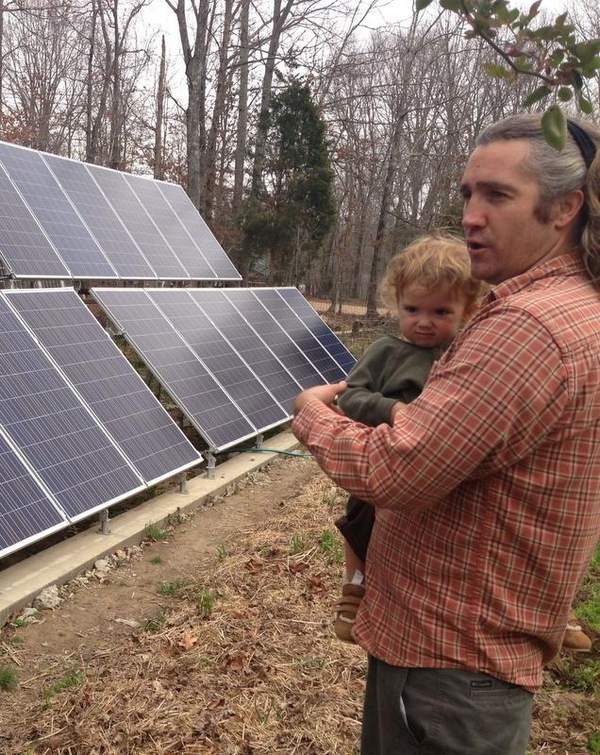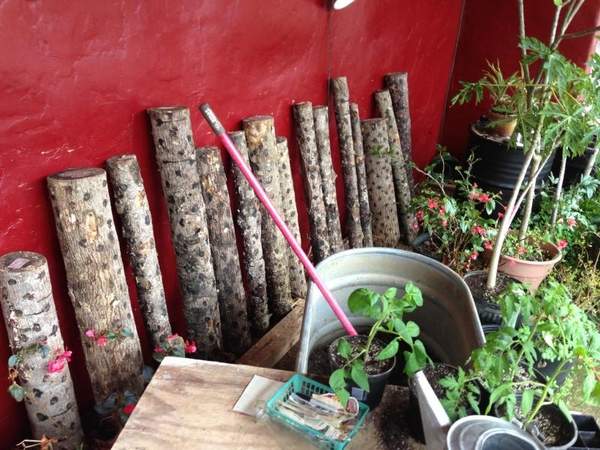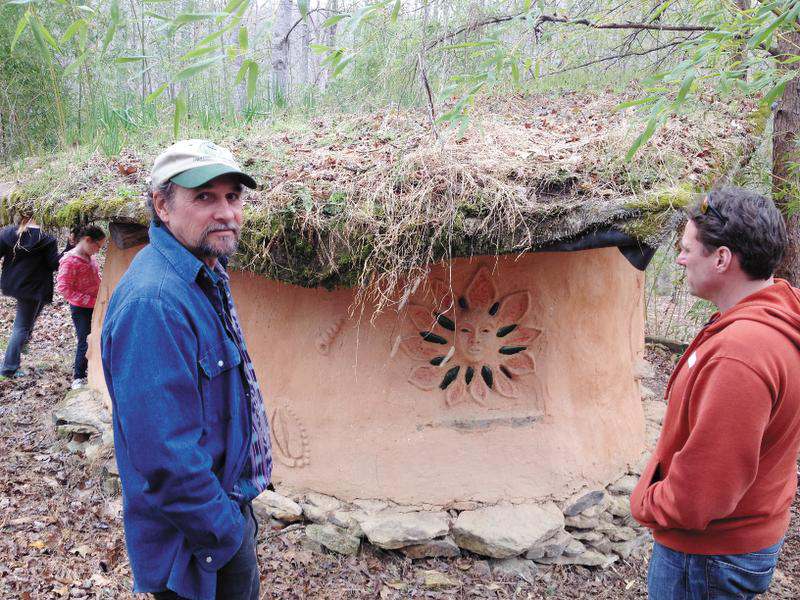Living in community: At The Farm in Summertown, Tenn., peace, love and Mother Nature rule
Story and photos by Stacy Leiser, May 8, 2013
SUMMERTOWN, Tenn. — When most people hear of The Farm for the first time, they imagine fields of crops and barns full of livestock.
It’s an understandable mistake.
While the residents of The Farm in Summertown, Tenn. grow their own food as much as possible, The Farm is less about agriculture than it is about a way of life. Today, it has around 200 people living within a 3-square-mile rural area, all of whom make basic agreements that could be summed up as, “We’re all in this together.”
As described on The Farm’s web site, www.thefarm.org, their original philosophy was “to live a ‘back to the land’ lifestyle while still remaining engaged in social change to make the world a better place.”
They harness solar power, recycle extensively, and use energy-efficient building materials for their homes. While many have a chicken coop out back, they do not raise animals for slaughter. They do not bring weapons onto the property, and believe in a guiding principle of peace with each other, animals, and the earth.
The Farm got started in 1970, when 60 busloads of hippies arrived in Tennessee. They started out together in San Francisco, many of them students of Stephen Gaskin’s infamous Monday Night Class, which attracted as many as 2,000 free-thinkers weekly. Some 300 of them caravanned across the country, Gaskin a sought-after speaker espousing peace, love and tolerance.
On the caravan, babies were born; bonds were strengthened. The group decided to find a new place to call home, a place where they could adhere to a way of life incompatible with violence and with modern consumer culture.
“Tennessee was very friendly. There was something to this Southern hospitality,” said Douglas Stevenson, who has lived at The Farm for 40 years with wife, Deb.
Many people were put off by the caravan, including the FBI.
“The FBI had gone around to all the realty companies and said, ‘Don’t sell the hippies any land. If they can’t buy land, they’ll move on,'” Stevenson said.
But those hippies found a hero in independent-minded moonshiner Homer Sanders. In 1971, he sold them 1,000 acres of land at $70 per acre. The farm has since expanded considerably, including the establishment of The Swan Trust, a 1,500-acre ecological preserve that borders The Farm.
In the beginning, the buses served as shelter for many of the residents, and others bought Army surplus tents for $25 or built small houses with wood from old barns they helped people tear down in town.
While championing peace as a way of life, residents of The Farm embraced a vegetarian diet. Stephen Gaskin’s philosophy was: “We don’t eat anything that can look you in the eye and try to run away.”
Stevenson said the decision is an obvious one for anyone with a wider world view.
“If you really care about the environment and the planet, one of the biggest steps you can take is to be a vegetarian,” he said.
In addition to consuming many more pounds of grain than they will ultimately produce in food, cows are water hogs. It takes 5,200 gallons of water to produce a pound of beef, compared to 23 gallons for a pound of tomatoes. By giving up beef, the average meat-eater will save 300,000 gallons of water per year.
People who live at The Farm also believe childbirth is a sacred experience.
“It’s not a medical procedure, it’s a passage of life,” Stevenson said.
Ina May Gaskin, author of “Spiritual Midwifery,” has become the most famous midwife in the world. She and Stephen Gaskin still live at The Farm, and midwifery training is offered regularly.
Today, The Farm is about as open as a private community could be, with the public invited to visit for nature hikes, community dinners, weekend workshops and retreats.
People can apprentice for the summer at the Ecovillage Training Center, a training ground for natural building innovation and a total immersion school for sustainable living. The Ecovillage Training Center is directed by Albert Bates, a world leader in the movement toward sustainable living and author of “Climate in Crisis,” with a foreword by Al Gore.
The Farm is also home to many community service organizations, some that seek to preserve the earth or aid victims of disaster.
“We have more nonprofits per square mile than anywhere in the country,” Stevenson said. If you “focus outside yourself, then you are not tearing yourself apart with internal arguments.”
While people who live there have jobs outside The Farm, several businesses operate within its borders. People at The Farm invented the Nuke Buster, a handheld geiger counter, now called Radiation Alert. It was backordered for 6 months following the 2011 tsunami in Japan.
The Farm has been through rough times, peaking in population at around 1,200 in 1982, with 30-40 people living in each house. Many changes have occurred in the decades since, but the residents of The Farm still adhere to the guiding principle they had 40 years ago, Stevenson said, “to spread the word of peace and love and unity.”

Mark Hubbard stands with son, Jayden, 1 1/2, by the solar array in front of his home.

Children on The Farm play with chickens, which are kept by many residents for eggs, but not for slaughter.

Mark Hubbard and Caroline Dowdy are raising their 1 1/2-year-old son, Jayden, on The Farm. They use a greenhouse to grow mushrooms and seedlings, and use solar panels to power their house.

The Farm’s unofficial ambassador is 40-year-resident Doug Stevenson, host of The Farm Experience Weekend and many other retreats, shown here with a living-roof building.



